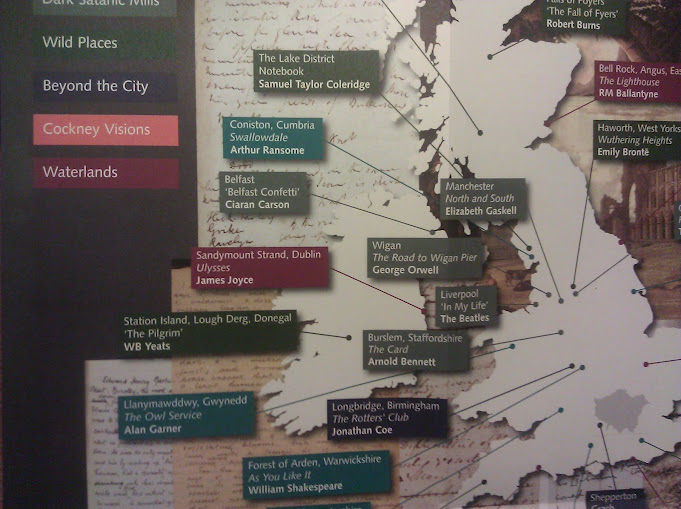I recently visited the British Library @britishlibrary in London where they explored literature ‘from William Blake to the 21st-century suburban hinterlands of J G Ballard, Writing Britain examines how the landscapes of Britain permeate great literary works.’

It is an interesting project with over 150 literary works included categorised into:
- Rural Dreams
- Dark Satanic Mills
- Wild Places
- Beyond the City
- Cockney Visions
- Waterlands
What caught my attention was the description of Wild Places,
‘Wild landscapes such as moors and heaths can be overwhelming and unknowable, presenting challenges to the human mind. […] Encounters with the wild can equally be transformative for writers, enlarging their ordinary limits of perception, and prompting spiritual renewal’
It was enlarging the ordinary limits of perception that intrigued me, is this what neocartography could be, what makes these places enlarge the ordinary limits of perception?
I like to think that it is something along the lines of ‘GeoSensitivities’ that these places are transformed/transcend the ordinary limits through literature or cartography. These sensitivities could be along the lines of what psychogeography explores:
- human beings walking (not cars)
- lost found making the unimaginable, imaginable
- new maps can smell
- experiential & hidden
These are some of the views that @FelphamPA proposes, is it partly that place of magical realism in literature, these non existent environments (enhancements) that enlarge the ordinary limits of perception?
It could be these devices literature/geosensitivities that could provide the wonder, or as FelphamPA quotes:
http://www.bl.uk/whatson/exhibitions/writingbritain/about/
Share your own tales with an interactive map http://www.bl.uk/pin-a-tale/pin-a-tale-map.aspx
You might also like http://www.poetryatlas.com/
Reblogged this on Rashid's Blog.